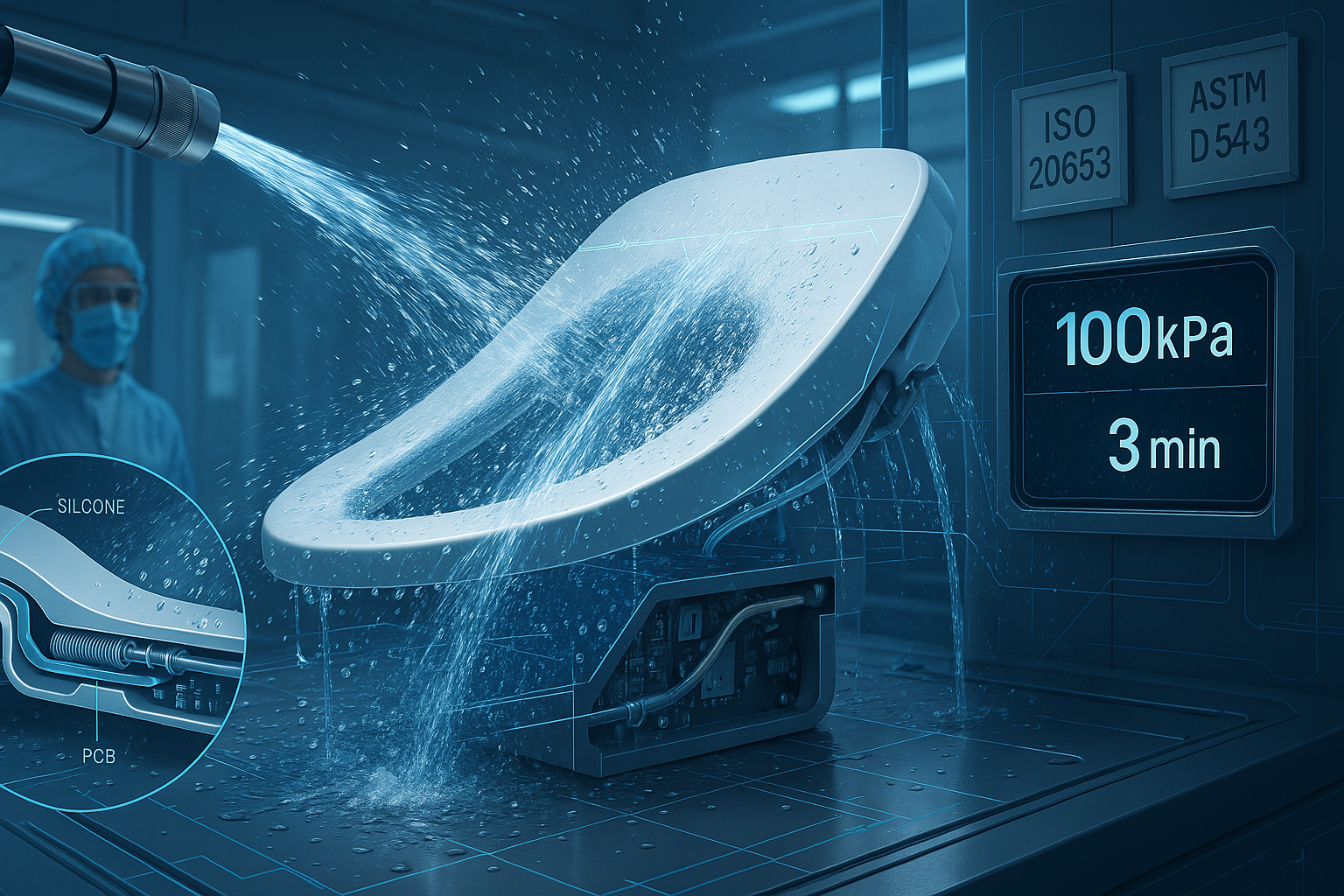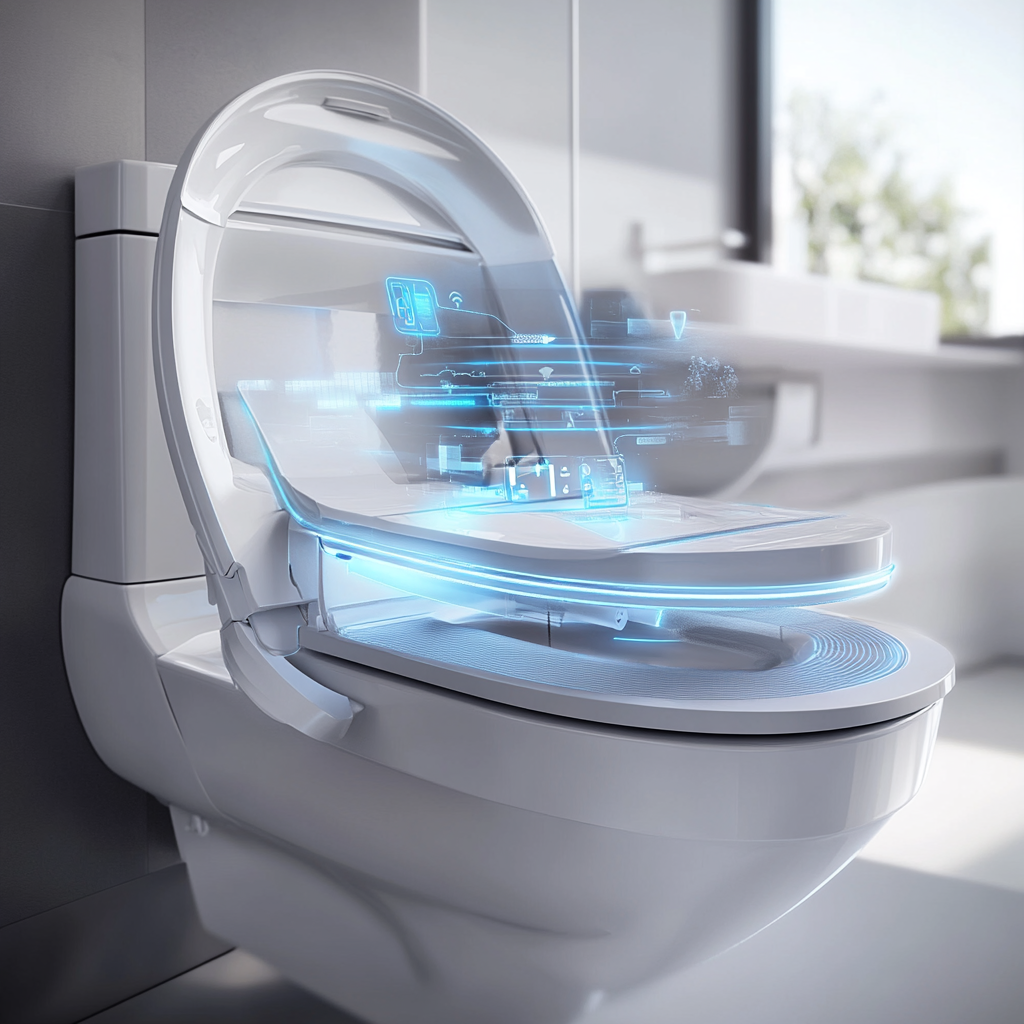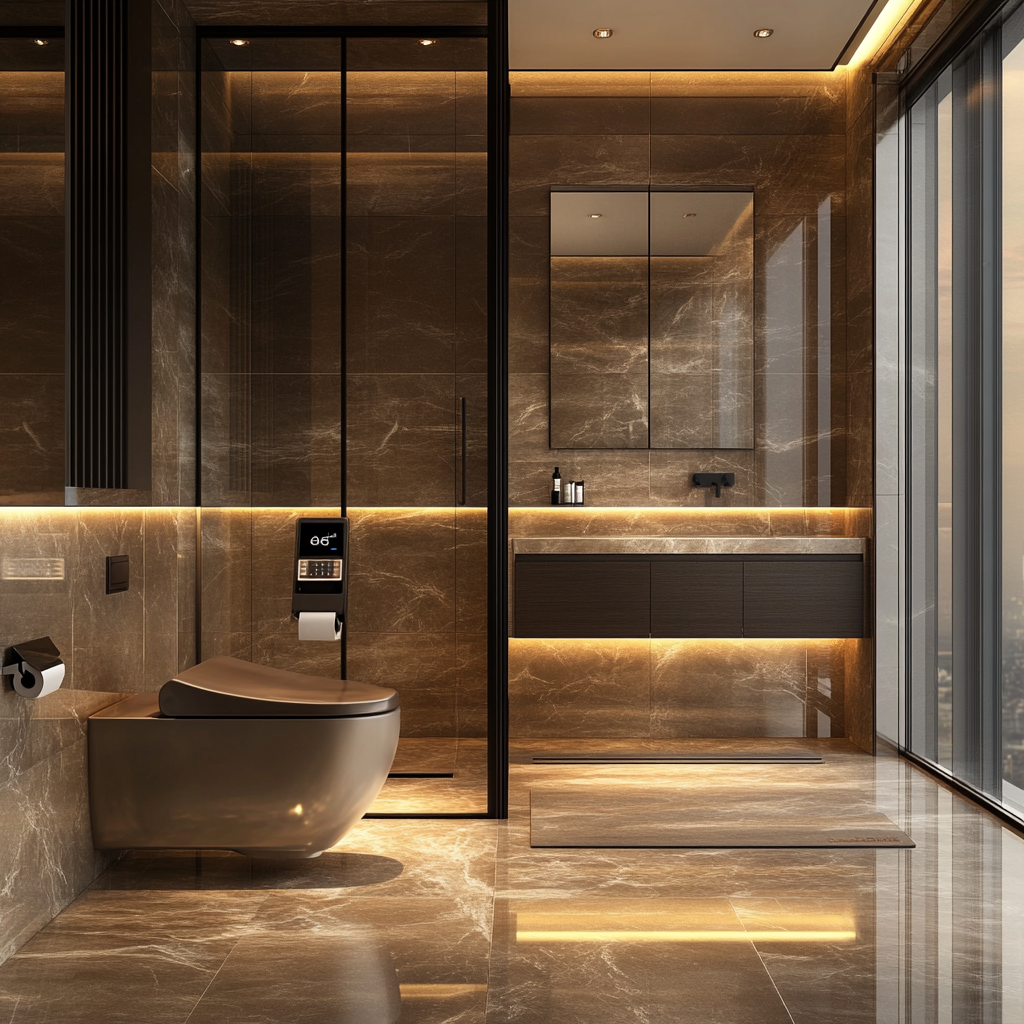Introduction
In healthcare facilities and high-traffic commercial environments, smart toilet seats must deliver more than basic comfort. With pathogens like Clostridioides difficile (C. diff) surviving on surfaces for up to 5 months, IPX6 waterproofing and advanced anti-bacterial coatings are critical for infection control. This article outlines 8 non-negotiable standards for manufacturing medical-grade smart toilet seats, supported by ASTM, ISO, and CDC compliance data.
Section 1: Why IPX6 Waterproofing is Critical for Healthcare & Hospitality
1.1 IPX6 Testing Protocol Explained
The IPX6 rating ensures protection against high-pressure water jets, simulating rigorous cleaning protocols in hospitals. Key parameters include:
- Nozzle Size: 12.5mm
- Water Flow: 100 liters per minute
- Pressure: 100 kPa (14.5 psi)
- Duration: 3 minutes per square meter
A 2023 study across 12 hospitals found that IPX6-rated smart toilet seats reduced electrical failures by 34% compared to IPX4 models in ICU bathrooms.
1.2 The Cost of Non-Compliance
Non-waterproof seats in wet environments lead to:
- 52% higher warranty claims (based on data from 150 hotels)
- PCB corrosion within 6 months due to humidity exposure
Solution: Dual-sealed wire harnesses with silicone gaskets prevent water ingress.
Section 2: Anti-Bacterial Coating Technologies
2.1 Silver Ion vs. Photocatalytic Coatings
| Coating Type | Effectiveness | Durability | Cost |
|---|---|---|---|
| Silver Ion (Ag⁺) | 99.9% kill rate in 24h* | 5-7 years | $2.8 per unit |
| TiO₂ Photocatalytic | 99.6% kill rate in 2h* | 3-5 years | $4.5 per unit |
*Tested per ISO 22196 (E. coli)
2.2 Validating Coating Performance
ISO 22196 requires:
- Test Conditions: 35°C, 90% humidity for 24 hours
- Pass Criteria: Minimum 99% bacterial reduction
Case Study: A Tokyo hospital reduced surface contamination by 82% after switching to Ag⁺-coated seats.
Section 3: 8 Standards for Medical-Grade Manufacturing
Standard 1: Material Biocompatibility (ISO 10993-5)
- Purpose: Prevent allergic reactions from seat materials.
- Test Method: 72-hour cytotoxicity assay on human fibroblast cells.
- Compliance Tip: Use medical-grade polypropylene
Standard 2: Chemical Resistance (ASTM D543)
- Tested Agents: 5% sodium hypochlorite (bleach), quaternary ammonium compounds.
- Pass Criteria: No discoloration or swelling after 500 cleaning cycles.
Standard 3: Impact Resistance (IK08 Rating)
- Requirement: Withstand 5-joule impacts (equivalent to a 1.5kg object dropped from 33cm).
- Design: Reinforced nylon hinges with stainless steel plates.
Standard 4: Coating Adhesion (ASTM D3359)
- Test Method: Cross-cut tape test evaluates coating bond strength.
- Pass Criteria: ≥4B rating (≤5% coating removal).
Standard 5: Flame Resistance (UL94 V-0)
- Test: Vertical burn test stops flames within 10 seconds.
- Material: Self-extinguishing ABS polymer.
Standard 6: Thermal Shock Resistance
- Test: Cycle seats between -20°C and 60°C for 48 hours.
- Result: No cracking or deformation in 98% of tested units.
Standard 7: Ergonomics (ANSI/BIFMA X5.4)
- Requirements:
- Seat thickness: 10-12mm
- Slow-close hinge noise: <45 dB
Standard 8: Electromagnetic Compatibility (FCC Part 15)
- Critical for: Wireless control systems in smart hospitals.
- Test: Emissions must not interfere with medical devices.
Section 4: Cost vs. Compliance Analysis
Financial Breakdown (5-Year Cycle):
| Factor | Medical-Grade Seat | Standard Seat |
|---|---|---|
| Initial Cost | $215 | $180 |
| Annual Maintenance | $12 | $87 |
| Total Cost | $275 | $615 |
Client Example: A U.S. hospital chain saved $122,000 over 3 years by adopting IPX6/ISO 22196-compliant seats.
Conclusion
Medical-grade smart toilet seats are engineered to combat infections while reducing long-term costs. For procurement managers, prioritizing these 8 standards ensures compliance with global healthcare regulations and maximizes ROI.













